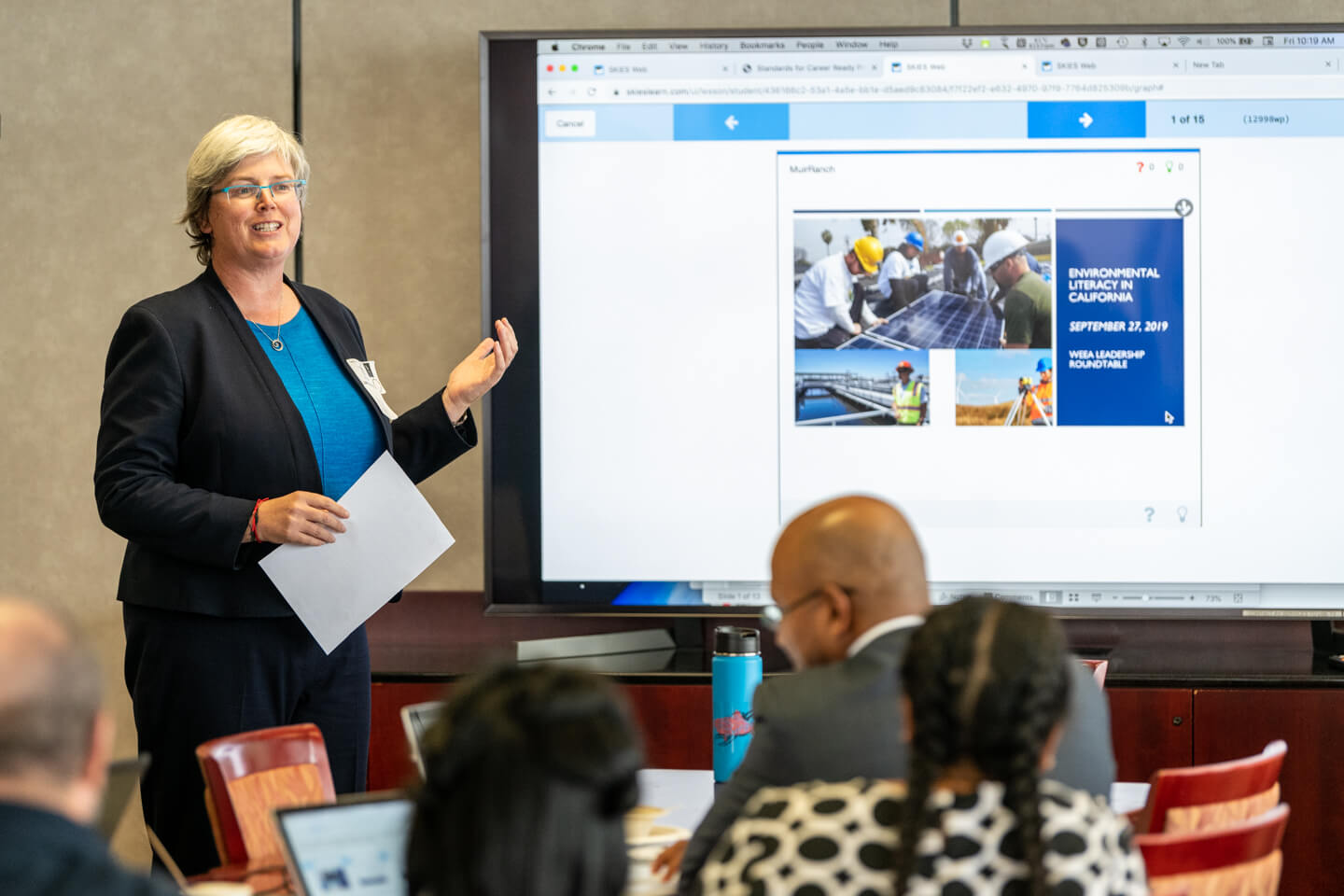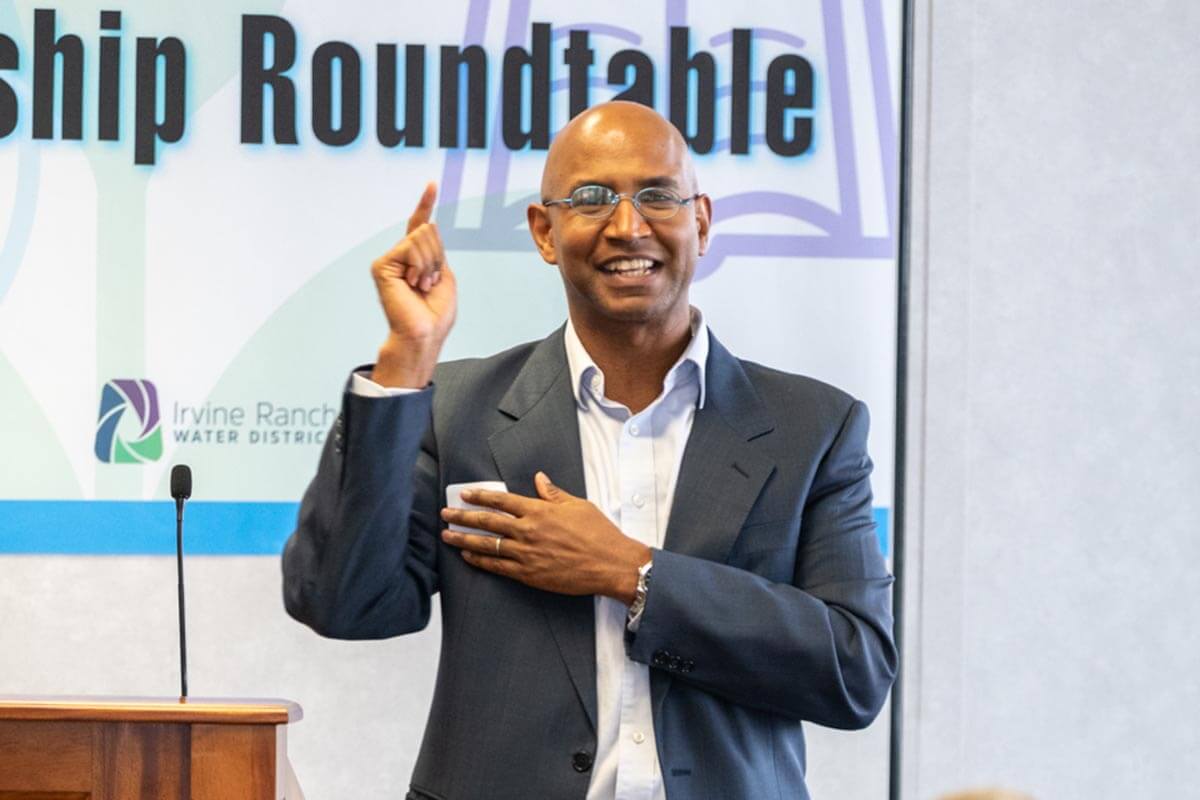The excitement was palpable after the self-introductions at the Water, Energy, and Education Alliance (WEEA) leadership roundtable, with each person keenly aware that they were looking at new faces and hearing new voices expressing interest in achieving the same goal: To offer hope to high school students that they can earn a family-sustaining wage in the water or power industry without the expense of attaining a four-year degree.
Under the guidance of the California Environmental Education Foundation (CEEF), WEEA is initiating and strengthening environmental career pathways and partnerships between school districts and the energy and water sectors. Five water and power industry sponsors are working with educational leaders in their service areas to collaborate on the goal of creating energy, environment, and utilities industry sector career technical education (CTE) pathway programs that begin in high school and continue on to the community college level.
Genesis and Support of WEEA
CEEF convened its first leadership roundtable of both water industry and education professionals in 2018 to determine the level of interest in forming a Southern California WEEA. There was universal interest expressed from both the business and education participants, and they quickly agreed upon key strategies to begin strengthening career pathways and partnerships between school districts, community colleges, county offices of education, regional occupational program centers, and the energy and water sectors.

To gain more insight into the development of CTE pathway programs, WEEA has since convened three leadership roundtables. These gatherings featured speakers from the California Environmental Literacy Initiative (CAELI), Rialto Unified School District, and their community CTE partners, such as West Valley Water District, Rialto Water Services, and San Bernardino County Superintendent of Schools.
When Juanita Chan, coordinator for STEM, related college and career pathways, and adult education for the Rialto Unified School District, presented her district’s three-year workforce pathway of water courses accessible to Rialto high school students, it was clear that their CTE program could serve as a statewide model of successful community partnership. One of the many exciting moments came when the co-sponsors of the roundtable, Dr. Adrian Hightower from Metropolitan Water District of Southern California and Walter Zeisl from the Los Angeles Department of Water and Power, shared their enthusiastic support for establishing workforce pathways through business–education partnerships. Walter described the many opportunities for the water industry to engage with K–12 and post-secondary educators with the goal of creating an abundance of educational opportunities for students to learn about and consider employment in water agencies, emphasizing the need for a diverse, well-prepared workforce.

Alliance Meets Critical Needs in Business and Education
WEEA cultivates a learning community in which leaders from both the education and the business sectors learn from one another to implement innovative strategies for strengthening skilled craft career pathways for high school youth. Opening new workforce pathways is beneficial to both water and energy businesses, as they are currently finding ever-increasing challenges to attract and hold onto skilled labor—particularly a pool of younger and more diverse workers.
According to a study published in 2018 by the Metropolitan Policy Program at Brookings, there is a “silver tide” of retirements in the water industry currently. The average age of water utility workers is 56 years, with 38 percent being 60 or more years old and only 3 percent 30 or younger. Moreover, both the water and energy sectors suffer not only from a lack of public visibility, but also from widespread depleted CTE programming in secondary schools. This paucity of high school and community college training results in reduced student interest and a lack of practical experience among prospective workers.
A 2016 Fordham Institute study by Shaun M. Dougherty of University of Connecticut, who followed three cohorts of over 100,000 students from 8th through 12th grade, found that students with greater exposure to CTE are more likely to graduate from high school, enroll in a two-year college, find employment, and earn higher wages.
WEEA Partnership Opportunities
There was strong consensus among the roundtable business leaders that opportunities abound for business–education partnerships designed to enhance students’ skills and career interests in the water and energy sectors. CEEF encourages businesses and utilities to enter into a formal memorandum of agreement (MOA) with their education partners to support one or more of the following action strategies:
- Support high school teacher and counselor externships.
- Recruit industry retirees or staff to teach CTE courses.
- Pay for student apprenticeships and scholarships.
- Arrange onsite job shadowing and internships.
- Establish online grant opportunities that enable school districts to apply for targeted funding (e.g., purchase CTE lab supplies and equipment, fund teacher release time to rewrite district CTE curriculum for jobs in the water and energy sectors).
As an equal partner in the MOA, school districts could agree to:
- Insert the CTE pathway (sequencing and articulation) into the master academic schedule.
- Provide incentives for faculty to pursue CTE credentials.
- Encourage CTE externships for faculty and counselors.
- Provide release time for CTE curriculum alignment.
- Articulate the high school CTE course with a community college workforce program.
- Commit CTE fund support in school districts’ three-year local control and accountability plan.
- Ensure access and equity for student recruitment in CTE programs.
- Provide facilities, equipment, technology, and materials for CTE.
Call to Action
WEEA is committed to catalyzing the formation of business–education partnerships. The importance of such partnership was captured in a recent CAELI publication, A Call to Action for County, District, and Educational Leaders. The Call to Action highlights SB 720 (2018, Allen), which codified California’s Environmental Principles and Concepts (EP&Cs) into education code to ensure that state leaders “assist in building and supporting partnerships and regional and statewide networks of public and private agencies and organizations, including county offices of education, school districts, and private partners, such as not-for-profit organizations, and community-based education providers that support the advancement of environmental literacy in California.”
CEEF is dedicated to fulfilling the spirit of SB 720 through the partnerships it facilitates within WEEA. These business–education agreements benefit all the WEEA stakeholders as they step up their investment in the education of high school students, teachers, and counselors to create California’s workforce of tomorrow.
Photo Credit: Los Angeles Department of Water and Power

